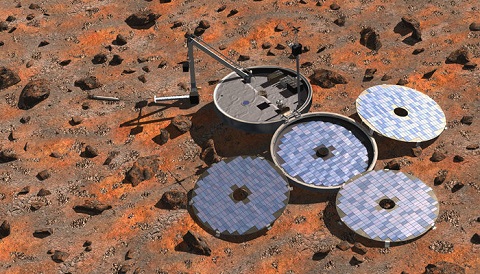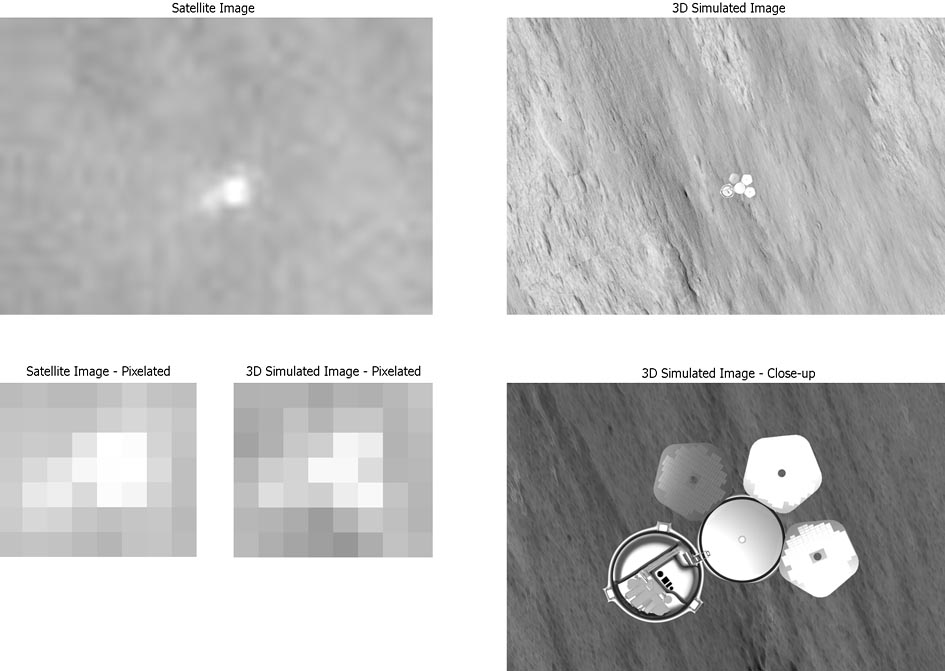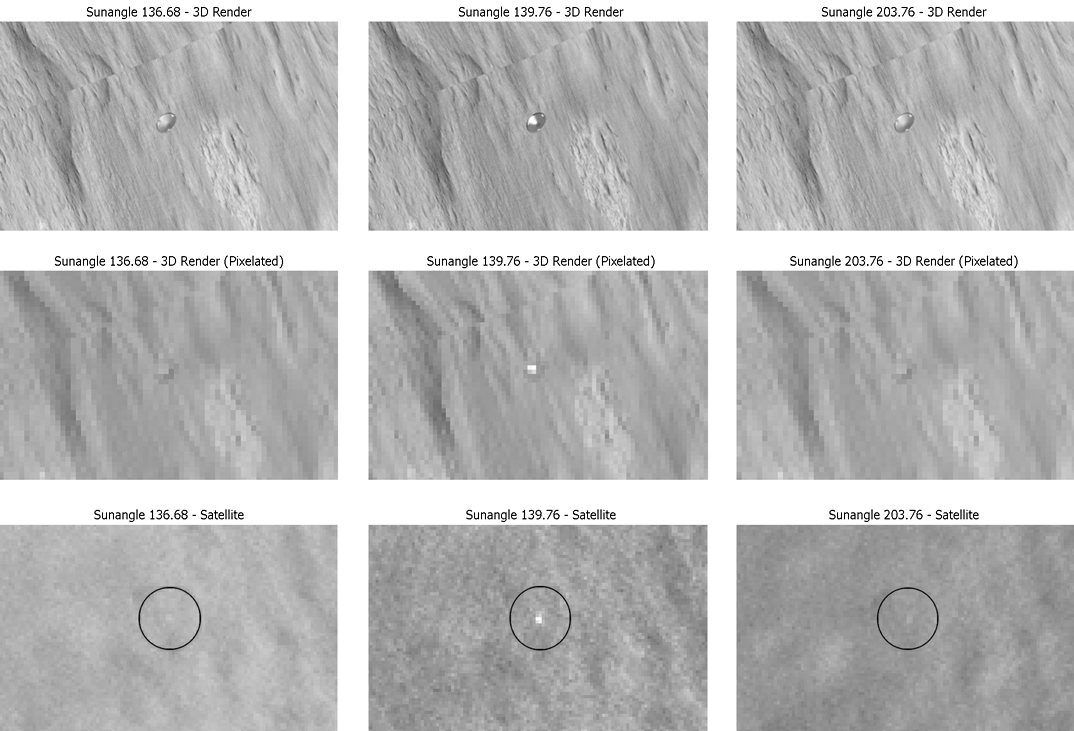An innovative technique sheds new light on what doomed the British Beagle 2 Mars lander.

ESA/Denman productions
It isn't everyday that new information surrounding the loss of a planetary lander comes to light. However, a recent study out of De Montfort University and the University of Leicester is providing further insight into just what happened to the United Kingdom's Beagle 2 Mars lander on Christmas Day, 2003. The detective work involves images from NASA's Mars Reconnaissance Orbiter (MRO) and a new technique known as reflection analysis.
Launched atop a Soyuz rocket from the Baikonur Cosmodrome in Kazakhstan on June 2, 2003, Beagle 2 hitched a ride to the Red Planet with the European Space Agency's Mars Express Orbiter. The lander separated from the orbiter on December 1, 2003, for a six-day coast to its targeted Isidis Planitia landing site. And then . . . silence. The vigil to listen for Beagle 2 from Earth and orbiters around Mars stretched for days, then weeks, until it was formally called off on February 6, 2004.
An Enduring Mystery
It has never been entirely clear just what happened to Beagle 2. The landing sequence employed airbags to bounce the craft to a stop, similar to the technique used successfully with NASA's Pathfinder, Spirit, and Opportunity missions.
A breakthrough came in early 2015, when the High Resolution Imaging Science Experiment (HiRISE) camera aboard MRO spied the lander. Analysts also identified the parachute and the lander's rear cover nearby, suggesting that the entry sequence went as planned. With its 0.5-m aperture, HiRISE is the equivalent of a spy satellite in orbit around Mars.
The 2015 images of the lander itself were, however, pretty indistinct. Designed to unfold its four solar panels like a pocket watch or the petals of a flower, Beagle 2 still presented a challengingly small target, just 2 m across even when deployed.
To overcome these obstacles, the team worked out a way to simulate various possible configurations for Beagle 2 and then used reflection analysis to look at unprocessed MRO images from various Sun angles for the best possible match. The team used commercially available software and called on visualization specialist Teodora Kuzmanova to create a realistic model of the lander that accurately reflected virtual sunlight. Finally, the image simulations were pixelated to simulate what HiRISE would see. The results appear below:

De Montfort Univ. / NASA / Univ. of Arizona
“The work confirms Beagle 2 landed intact on the surface of Mars and its entry and descent and landing system worked as planned,” says Mark Sims (University of Leicester). “It confirms that something went wrong during the deployment sequence.”
The study found the best match is likely a three- or possibly four-panel deployed configuration. One solar panel failing to deploy could have blocked the radio antenna's transmissions. The best match for a four-panel deployment involves a more drastic tilt, so perhaps Beagle 2 landed on a boulder. The analysis also identified the orientation of the nearby heat shield:

De Montfort Univ. / NASA / Univ. of Arizona
“We think the results show Beagle 2 actually landed safely but failed to open its fourth solar panel fully,” says Nick Higgett (De Montfort University). “This blocked the communications antenna. We definitely plan to do more experimentation with panel deployment angles to try to get an even better image match.”
In the end, Beagle 2 came heartbreakingly close to successfully calling home.

NASA / JPL-Caltech / Univ. of Arizona
While the loss of Beagle 2 was a blow for Mars exploration, it did train a whole generation of planetary engineers and scientists. Mars Express went on to be a resounding success, and is still in operation around Mars today. Colin Pillinger who led the Beagle 2 project, passed away in May 2014, less than a year before MRO located the lander.
MRO also witnessed the recent aftermath of the Schiaparelli landing attempt on October 19th, and the mission team recently released new color images of the crash site, seen at right.
The study is a great piece of planetary detective work, showing how new techniques can be applied to old problems — but the mystery of Beagle 2 endures. We'll probably never definitively know just what happened to Beagle 2, until an astronaut walks over to it one day to check it out.
 1
1









Comments
Jim-Baughman
November 18, 2016 at 4:15 pm
Dept of Nitpicking: There's an extra word "of" in the title to this article, after "doomed". Looks like there was an edit to the title and that stray word was left behind.
Excellent article! When Beagle failed I hoped that someday we would be able to image it or somehow figure out what happened. So many people had such high hopes for that project. It was painful to see them dashed.
You must be logged in to post a comment.
You must be logged in to post a comment.